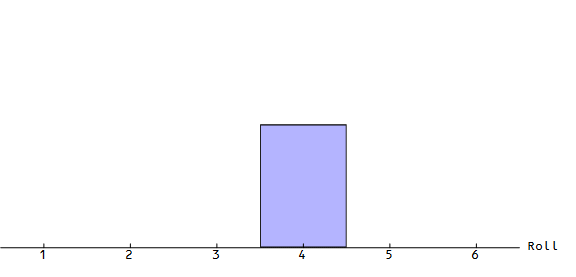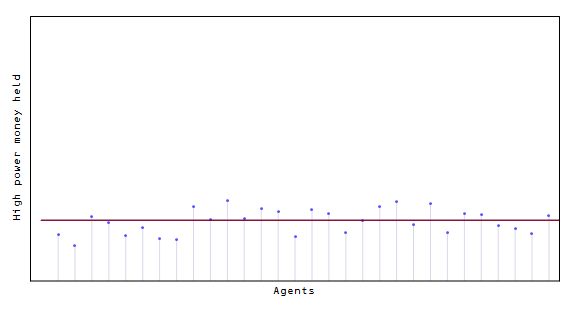Thinking about a big number like $38,129 can feel a bit like looking at a vast ocean, can't it? It's a sum of money, yes, but what does it truly mean for your everyday life, or for anyone's life, when you break it down into smaller, more understandable pieces? People often wonder about the real impact of figures like this, especially when they're trying to figure out how it might relate to their own earnings or financial hopes.
This curiosity about money, how it's earned, and what it represents, is very common, you know. We see the dollar sign, that familiar 'S' with a line or two, pretty much everywhere, and it stands for so much. As my text shares, the dollar sign, or peso sign as it's also called, is a currency symbol that has a long history, its exact origin still a bit of a puzzle for many. It's a mark placed before a number to show that it means dollars, whether it's for the United States, Canada, Australia, or other places, so, it's a global symbol of value.
So, when we see a figure like $38,129, it naturally brings up questions. Is that a lot? What could someone do with that amount? And perhaps the most direct question of all, what does $38,129 look like if you earn it, say, over an hour? This article will help you get a clear picture of what that figure means on an hourly basis, and what it could mean for different parts of your financial world, too it's almost a way of making a big number feel more real.
Table of Contents
- Understanding the Hourly Breakdown: $38,129 Simplified
- Beyond the Number: What $38,129 Could Mean for You
- Making Sense of Your Money: Practical Tips
- Frequently Asked Questions About Hourly Pay
- Final Thoughts on Your Earnings
Understanding the Hourly Breakdown: $38,129 Simplified
When you look at a sum like $38,129, your mind might jump to a yearly salary, a project fee, or perhaps a one-time bonus. But how do you turn that into an hourly rate? It's a pretty straightforward math problem, honestly, though the answer can change a bit depending on how many hours someone works. This simple conversion helps us grasp the real "value per hour" of that amount, which is, you know, quite useful for comparison.
The Basic Calculation: How We Figure It Out
To find out how much $38,129 is an hour, we need to make some assumptions about the work period. Most people think of a standard full-time work year. That typically means working 40 hours a week for 52 weeks in a year. So, that's 2,080 hours in a year (40 hours/week * 52 weeks/year). If you take $38,129 and divide it by 2,080 hours, you get a clear hourly figure. This is, in fact, how many employers and employees calculate things, more or less, for standard roles.
Let's do the math right now. $38,129 divided by 2,080 hours gives you approximately $18.33 an hour. So, if someone earns $38,129 over a standard full-time work year, they are making about $18.33 for every hour they put in. This figure, you see, provides a very tangible way to think about that larger sum, making it feel less abstract and more like something you can relate to your daily efforts, arguably.
What Kind of Work Might This Figure Represent?
An hourly rate around $18.33 might be what someone earns in a range of jobs. This could include administrative support roles, certain customer service positions, some entry-level technical jobs, or even skilled trades where experience is growing. It's a rate that, in many places, is above the minimum wage, yet it might not be considered a high-income figure, you know, depending on where you live and what the cost of living is like there. This rate, therefore, often supports a comfortable, but not luxurious, lifestyle for many single people or contributes significantly to a household's income.
For instance, a retail manager, a medical assistant, or perhaps a skilled factory worker might find their earnings falling into this range. It truly shows that many people are working hard, putting in their time, and earning a decent, honest wage for their efforts. This amount, by the way, reflects a commitment to a full work schedule, and it's interesting to consider how many different kinds of people and jobs could be linked to such an hourly rate, isn't that something to think about?
The Dollar Sign: A Symbol of Value and History
When we talk about $38,129, the dollar sign, that familiar '$' symbol, is right there at the start. It's a symbol that, as my text tells us, is instantly understood across many languages and cultures, even transcending just currency in some uses. It means "dollars," a standard unit of money in places like the United States, Canada, and Australia. The symbol itself has a bit of a mysterious past, with no one really knowing for sure who first came up with it, or where it exactly came from, which is kind of cool.
Some theories suggest it came from the Spanish peso, perhaps an 'S' with a 'P' on top, or maybe it evolved from colonial currency marks. Regardless of its exact origins, the dollar sign has become a very powerful symbol, even representing American power, as my text points out. It's more than just a mark before a number; it's a visual cue that immediately tells us we are dealing with money, and specifically, dollars. So, when you see $38,129, that little '$' is doing a lot of work, visually speaking, to define the value you are looking at, you know, in a very clear way.
Beyond the Number: What $38,129 Could Mean for You
Understanding that $38,129 works out to about $18.33 an hour for a standard full-time year is a good start. But money isn't just a simple calculation; it's about what that money can do, what it means for your life, and how it fits into the bigger picture of your financial well-being. This amount, in a way, is a foundation for many people's financial lives, and it's worth exploring what it can support, or what challenges it might present, too it's almost like a starting point for a financial conversation.
Considering Different Work Schedules
The $18.33 hourly rate assumes a 40-hour work week, 52 weeks a year. But not everyone works that schedule, do they? If someone works fewer hours, say 30 hours a week, then $38,129 would mean a higher hourly rate. For example, 30 hours a week for 52 weeks is 1,560 hours a year. Dividing $38,129 by 1,560 hours gives you about $24.44 an hour. That's a pretty big difference, isn't it?
Conversely, if someone works more than 40 hours, maybe 50 hours a week, their hourly rate for that same $38,129 would be lower. 50 hours a week for 52 weeks is 2,600 hours a year. So, $38,129 divided by 2,600 hours is about $14.66 an hour. These variations show that the hourly rate is very much tied to the number of hours someone puts in. It's not just about the total sum, but the time invested to earn it, which is, you know, a very important point to remember.
The Impact of Taxes and Deductions
It's very important to remember that $38,129 is a gross figure, meaning it's the amount earned before anything is taken out. In reality, a portion of this money will go towards taxes, like federal, state, and local income taxes, as well as social security and Medicare contributions. There might also be deductions for things like health insurance premiums, retirement savings, or other benefits. So, the actual money someone takes home, their net pay, will be less than $18.33 an hour. This is a reality for almost everyone earning a wage, obviously.
Understanding the difference between gross and net pay is really important for budgeting and financial planning. That $18.33 an hour is a good benchmark, but what truly matters for your daily spending and saving is the amount that actually lands in your bank account. It's a bit like looking at a recipe; the total ingredients are one thing, but what you actually get to eat is another, more or less, after all the cooking and preparation. You have to account for these things, definitely, to get a real picture of your earnings.
Comparing to Average Earnings
How does $18.33 an hour, or $38,129 a year, compare to what other people earn? Average wages can vary a lot depending on the country, the region, the industry, and even the specific job role. In some areas, this might be considered a solid, middle-class income, while in others, especially very expensive cities, it might be a bit of a stretch to live comfortably without other sources of income or shared expenses. It's a pretty interesting point to consider, isn't it, how location changes the value of money?
For example, according to data from the Bureau of Labor Statistics in the U.S., the median weekly earnings for full-time wage and salary workers in the first quarter of 2024 was around $1,145. If you multiply that by 52 weeks, you get roughly $59,540 a year. So, $38,129 is certainly below that median, but it's still a significant income that provides for many individuals and families. This comparison helps put the $38,129 figure into a wider context, showing where it stands in the overall economic picture, as a matter of fact. You can explore more about average wages and economic data by checking out reliable sources like the Bureau of Labor Statistics website.
Making Sense of Your Money: Practical Tips
Knowing what $38,129 means on an hourly basis is just the start. The real benefit comes from using that information to make good choices about your money. Whether you're earning this amount, hoping to, or just curious, thinking about your finances in hourly terms can really help you get a handle on things. It's about taking that number and making it work for you, you know, in your daily life, and for your future plans.
Budgeting with an Hourly Mindset
Thinking about your expenses in terms of hours worked can be a powerful budgeting tool. For example, if you know you earn $18.33 an hour, you can look at a purchase and think, "This new gadget costs $183.30, so that's like 10 hours of my work." This way of thinking can help you make more mindful spending choices. It puts a very direct value on your time and effort, which can be quite motivating for saving money. It's a different perspective, pretty much, than just seeing a dollar amount.
This method can also help you identify where your money is truly going. If you spend $500 a month on eating out, that's roughly 27 hours of work just for restaurant meals. Is that worth nearly a full week's work for you? This kind of calculation, honestly, helps you see the true cost of your habits in terms of your own time and labor. It's a very practical way to approach your budget, helping you decide where your hours are best spent, financially speaking, and stuff.
Saving and Planning for the Future
Even at $18.33 an hour, saving money is absolutely possible and very important. Setting aside even a small portion of each paycheck can add up over time. Thinking about future goals, like a down payment on a home, a new car, or retirement, becomes more achievable when you break down the required savings into hourly contributions. For instance, if you want to save $1,833, that's about 100 hours of work. It sounds like a lot, but if you save just a few hours' worth of pay each week, you can reach that goal over time, seriously.
Consider setting up an automatic transfer from your checking account to a savings account each payday. This "set it and forget it" method is often the easiest way to build up savings without even thinking about it too much. Even if it's just $20 or $30 a week, that's a few hours of your work going directly towards your future. This kind of consistent effort, you know, really makes a difference over the long haul, helping your money grow, virtually.
Negotiating Your Worth
Understanding your hourly rate, and how it compares to industry averages, can also give you confidence when it comes to negotiating a salary or asking for a raise. If you know that your skills and experience are worth more than $18.33 an hour in the market, you have a strong basis for discussion. Having this number in mind helps you articulate your value in a very concrete way. It's about knowing your numbers, basically, and using them to advocate for yourself.
When you're preparing for a salary discussion, research what similar roles pay in your area and industry. This gives you solid data to back up your request. If you can show how your contributions have saved the company money or brought in new business, that strengthens your position even more. Remember, every hour you work has a value, and knowing that value helps you ensure you are being fairly compensated for your time and skills, which is, you know, a very important part of your career journey.
Frequently Asked Questions About Hourly Pay
People often have similar questions when it comes to understanding hourly rates and how they relate to larger sums of money. Here are some common ones that come up, which might help clarify things for you, too it's almost like getting answers to questions you didn't even know you had.
How do I calculate my own hourly wage from my annual salary?
To figure out your own hourly wage from a yearly salary, you typically divide your total annual salary by the number of hours you work in a year. For a standard full-time job, that's usually 2,080 hours (40 hours/week x 52 weeks/year). So, if your annual salary is $50,000, you would divide $50,000 by 2,080, which comes out to about $24.04 an hour. It's a very simple calculation, honestly, that gives you a clear picture of your hourly earnings.
Is $38,129 a good annual salary?
Whether $38,129 is considered a "good" annual salary really depends on several factors. Your location plays a very big part; what's comfortable in a small town might be a struggle in a major city due to different costs of living. Your personal financial situation, like whether you have dependents, debts, or other income sources, also matters a lot. For some, it's a solid income, especially if it's a first job or they have low expenses. For others, it might be a stepping stone towards higher earnings. It's quite subjective, you know, based on individual circumstances.
What are common deductions from an hourly wage?
When you earn an hourly wage, there are several common deductions that usually come out of your gross pay. These often include federal income tax, state income tax (if applicable in your state), and FICA taxes, which cover Social Security and Medicare. Beyond taxes, you might see deductions for health insurance premiums, contributions to a retirement plan like a 401(k), or perhaps union dues. These deductions reduce your take-home pay, so it's always good to check your pay stub to see what's being withheld, just a little, for each pay period.
Final Thoughts on Your Earnings
Understanding what $38,129 means on an hourly basis, roughly $18.33 for a standard full-time year, helps put a big number into a more manageable perspective. It's about breaking down large sums into smaller, more understandable pieces, which can really help you think about your money. This kind of financial awareness, you know, is a very useful tool for anyone, helping them to make better choices about their work and their spending. Learning more about personal finance basics on our site can really help you take control of your money, and you can also find helpful information about budgeting strategies to make your earnings go further.



Detail Author:
- Name : Dr. Jaunita Conn Jr.
- Username : jroberts
- Email : jordane.west@stracke.com
- Birthdate : 1991-12-25
- Address : 216 Weimann Flats Apt. 745 South Ramon, NE 54455
- Phone : +1 (740) 224-1785
- Company : Treutel and Sons
- Job : Assessor
- Bio : Et sint officia alias soluta hic quae ut. Est dicta quasi est earum et. Sed officia non qui illo laborum dolorem quia. Ipsa molestiae autem molestias placeat.
Socials
instagram:
- url : https://instagram.com/mossie_xx
- username : mossie_xx
- bio : Tempore aut vitae facilis. Ea laboriosam vel nulla repellat.
- followers : 600
- following : 1914
twitter:
- url : https://twitter.com/mossie_terry
- username : mossie_terry
- bio : Tenetur accusamus dolor sit quae quia velit. Velit consequatur temporibus dicta et nihil provident. Neque rerum quod temporibus et.
- followers : 3965
- following : 1154
tiktok:
- url : https://tiktok.com/@terrym
- username : terrym
- bio : Aut voluptates voluptatem occaecati tenetur quaerat.
- followers : 697
- following : 611
linkedin:
- url : https://linkedin.com/in/mterry
- username : mterry
- bio : Quia quae maiores voluptate sequi.
- followers : 1440
- following : 205
facebook:
- url : https://facebook.com/mossie_dev
- username : mossie_dev
- bio : Est perferendis facilis tempora ea consequatur eius aliquid.
- followers : 3070
- following : 2975